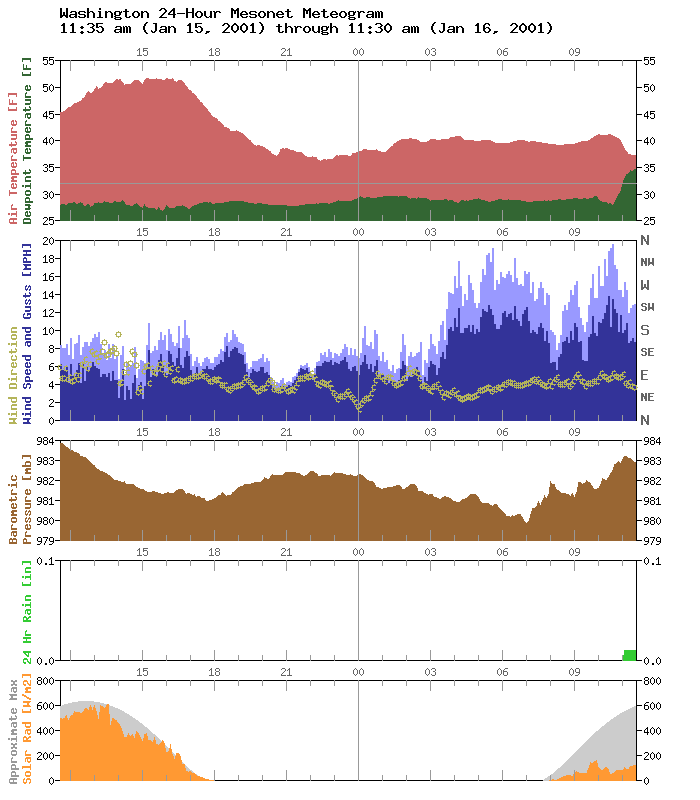Ticker for January 16, 2001
MESONET TICKER ... MESONET TICKER ... MESONET TICKER ... MESONET TICKER ...
January 16, 2001 January 16, 2001 January 16, 2001 January 16, 2001
The "Wet Bulb" Effect Shows up in Mesonet Meteograms
Several of today's Mesonet meteograms contain evidence of a significant
"wet bulb effect", which can occur when precipitation falls into
unsaturated air.
For example, today's Washington Mesonet meteogram

shows a 3-4 F decrease in temperature concurrent with a 6-7 F increase
in dew point temperature at about 10:30 this morning. At the time, a
very light winter mix was falling in central Oklahoma.
As the precipitation fell into the unsaturated air, it evaporated.
This evaporation introduced water vapor molecules into the lowest layer
of the atmosphere, which raised the dew point. Because evaporation is
an endothermic process (it takes heat from the environment), it cooled
the air.
On a shorter time scale, if you've ever felt a rapid but temporary
temperature drop (say that three times!) during a snow flurry, chances
are you experienced this effect, commonly referred to as the "wet bulb
effect" or "wet bulb cooling".
January 16 in Mesonet History
| Record | Value | Station | Year |
|---|---|---|---|
| Maximum Temperature | 79°F | MANG | 2012 |
| Minimum Temperature | -15°F | VINI | 2024 |
| Maximum Rainfall | 2.43″ | ALTU | 2004 |
Mesonet records begin in 1994.
Search by Date
If you're a bit off, don't worry, because just like horseshoes, “almost” counts on the Ticker website!